In this article, I’m going to outline everything you need to know to become a house-sitter in Costa Rica. There are numerous websites available to budding house-sitters, and it’s important to know how to utilize these. House-sitting offers a unique approach to traveling, enhances your experiences, and can save you a fortune in accommodation costs.
I’ve been house-sitting around the world for 5 years now; it has become a major part of my traveling life. Building a strong profile and picking up many tips and tricks along the way has allowed me to embark on a lifelong dream of traveling full-time.
My husband, Rob, and I put our plans into action in January 2022. Central America was one of the first destinations on our travel wish list. We enjoyed 3 glorious months of house-sitting in Costa Rica and saw everything from Arenal’s lush rainforests to the stunning beaches of Puerto Viejo.
Dream beach sits and luxury rainforest retreats are all within reach, but knowing how to secure them is vital. I’ve learned a lot about house-sitting since becoming a nomadic world traveler and will lay it all out for you here.
How to Become a House Sitter in Costa Rica
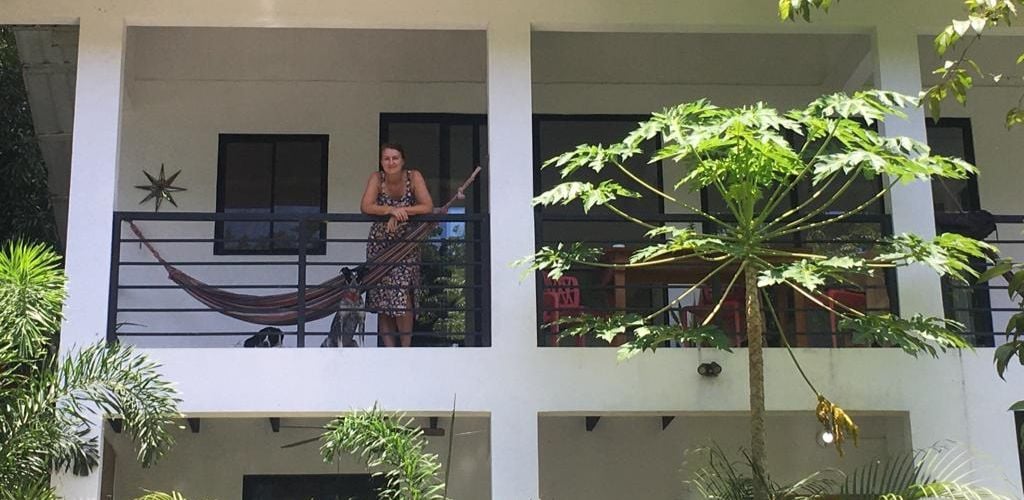
There are some great websites to help you become a house and pet sitter in Costa Rica. Finding the right one for you is an important first step to take. I’ve outlined some of my favorite house-sitting sites below;
1. Trusted Housesitters

My go-to house and pet-sitting website is Trusted Housesitters. Right now there are 6,670 sits worldwide currently accepting applications and dozens of active profiles in Costa Rica. Their platform is straightforward to use and easy to navigate, and I love the fact that they have an app.
Another great feature is the ability to save searches. For example, if you were looking for a 10-day house sit in Costa Rica in February, but nothing came up after your initial search, or you didn’t like the ones you saw, you could save your filters and be alerted as soon as a match becomes active.
Trusted Housesitters has 3 membership options that come with different benefits depending on the price you pay. The top membership is $260 and includes cancelation insurance, enhanced customer service, and 2 airport lounge passes a year. The basic option with unlimited worldwide sits is $129/year and is a great way to get started with house-sitting.
Right now, you can save 20% by using the discount code GOATS20. If you were looking for a sign to get started, this is most likely it!
2. Mind My House

Mind My House is a great introduction to house-sitting. It’s simple to use and is one of the cheapest sites around at $29/year. The low fee means users can feel safe dipping their toes into house-sitting waters. Homeowners seeking sitters can join for free, so there are always plenty of listings to pick from.
Potential house-sitters are free to look around the website before joining up to see what’s available at the time. Plenty of information is provided and you can even see how many people have currently applied. The statistics page is a great feature that shows how many active users they have and where.
Mind My House has been around since 2005, and it stands out to me because of its community-oriented vibe. What sets it apart is the direct connection you have with the owners, who actively engage in the day-to-day operations. For those hesitant about diving into house-sitting in Costa Rica, Mind My House could be the ideal starting point.
3. Workaway

Although predominantly a site for finding volunteer placements, a great tool to have in your house-sitting arsenal is Workaway.info. I’ve been using this website consistently over the last 3 years to find volunteer opportunities around the world. But one of the main search options on the site is house-sitting and there are currently over 500 listings globally.
They have an app, which is always a bonus, and I’ve found hosts to be quick and responsive to inquiries. Membership costs around $50/year or $30pp/year when a couple signs up with a joint membership. I’ve made great, life-long friends, as well as some handy global contacts via Workaway.
4. House Carers

Another website worth considering is Housecarers.com. Although it can’t compete with the numbers that Trusted Housesitters puts up, there are hundreds of listings currently seeking suitable candidates.
In the interest of keeping your options open, it’s wise to have at least a few active house-sitting memberships open. House Carers allows you to build a profile and search without paying anything upfront. If you find a house-sit you like the look of you’ll need to become a full-paying member to apply. Full membership is just $50/year so it’s another affordable house-sitting resource.
If you’re thinking of becoming a house-sitter in Costa Rica, Housecarers.com is a great site to explore what a housesitting website offers and how it all works.
5. Nomador

Although Nomador has a heavy lean towards European house-sits, they do regularly have listings in the Americas too. There are currently around a dozen active Costa Rican profiles on the site. Much like Trusted Housesitters, users are also able to save searches and be alerted when they come on the market. It’s a very functional and easy-to-use website.
Nomador’s 3-month basic package is great for people just getting started on their house sitting journey. Additional benefits such as insurance, premium customer service, and early access to new listings come with higher membership prices. The top-end package is around $190/year.
Despite not having an app, I like Nomador for its straightforward website and clear and informative listings. The basic package is a great way to try house-sitting without a big financial outlay to begin with.
Personal Experience House-sitting in Costa Rica
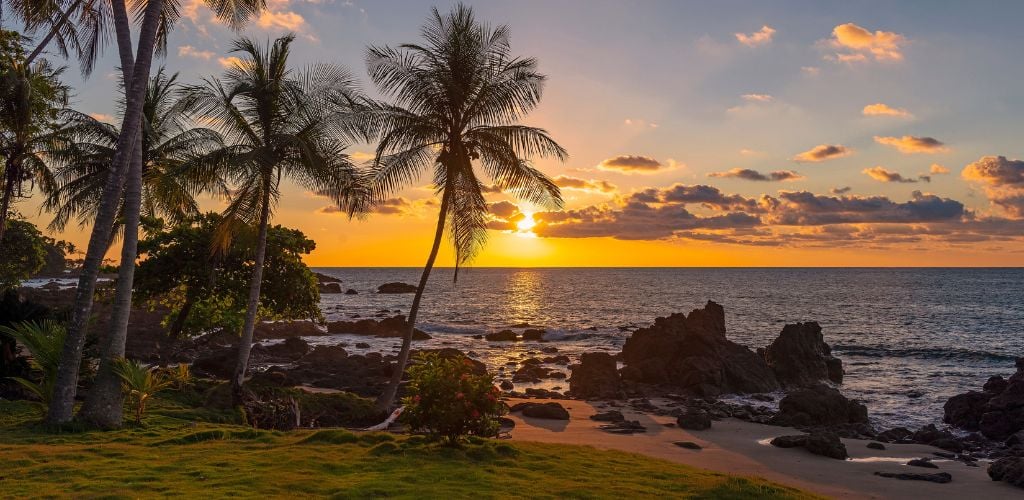
Costa Rica was high on my travel wish list when I left the UK in early 2022. I’d heard so much about the white sandy beaches and the wild and lush rainforest, that I couldn’t wait to arrive. I had 3 pre-organized house and pet sits booked for the duration of my stay.
After 2 days of acclimatizing in San José, the first house-sit was an hour north in La Fortuna. A beautiful and relaxing spot known for the huge Arenal Volcano that dominates the skyline. My time here came with 2 dogs to care for and the house backed onto the rainforest – it was incredible. Despite a few huge bugs, it was a great introduction to Costa Rican culture.
The second house sit was the jackpot listing I had craved since joining Trusted Housesitters – 4 weeks on the beach in Santa Theresa. A popular tourist destination and stunning location. I had additional responsibilities including a pool and 4 guest apartments that needed to be monitored, but no task was particularly taxing. It was steps from the ocean and an unforgettable experience.
San Isidro, around 30 minutes north of San José was the final house-sitting location in Costa Rica. The working coffee ranch was perhaps one of the most stunning properties I’ve ever set my eyes on. Thankfully the gardener dealt with the coffee growing, I just kept an eye on the house and a little dog called Rodelle.
Best Areas to House Sit in Costa Rica
I had such a wonderful time house and pet-sitting in Costa Rica. It’s a place to experience so many different things. With that in mind, here are my top 5 places to house-sit in Costa Rica;
1. Santa Theresa
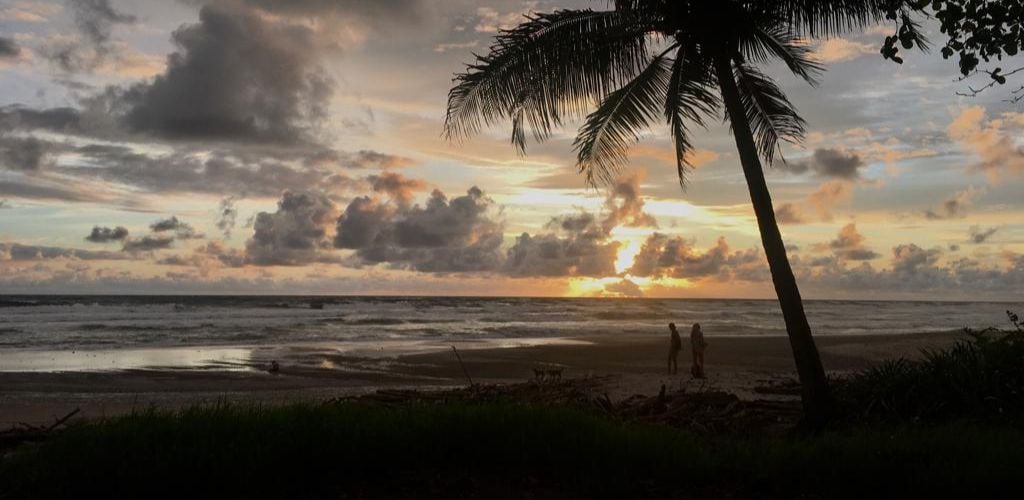
House-sitting jobs in Costa Rica don’t get any better than in Santa Theresa. The popular beach town is a well-loved tourist hot spot with stunning white sandy beaches, great surfing, and a lively culture of bars, cafes, and restaurants. I spent an entire month house-sitting here and absolutely loved it.
There’s a large expat community and a thriving tourist scene which means many of the cafes and restaurants have more of an Americanized feel to them. It does, however, mean that food and drink prices are significantly higher than in other Costa Rican towns.
In contrast, the one-track mud road that lines the main boulevard of Santa Theresa maintains the originality of the town. The whole place feels a little like stepping back to a simpler time. Don’t be surprised to see people walking barefoot, taking beers down to the beach at sunset, or riding scooters with a dog (or dogs) on their backs.
Location: Santa Theresa is located on the western coast of the Nicoya Peninsula. It’s around 115 miles (184 km) west of San José. Getting there requires a short boat trip across the Gulf of Nicoya from Puntarenas or a significant drive around it.
2. San José
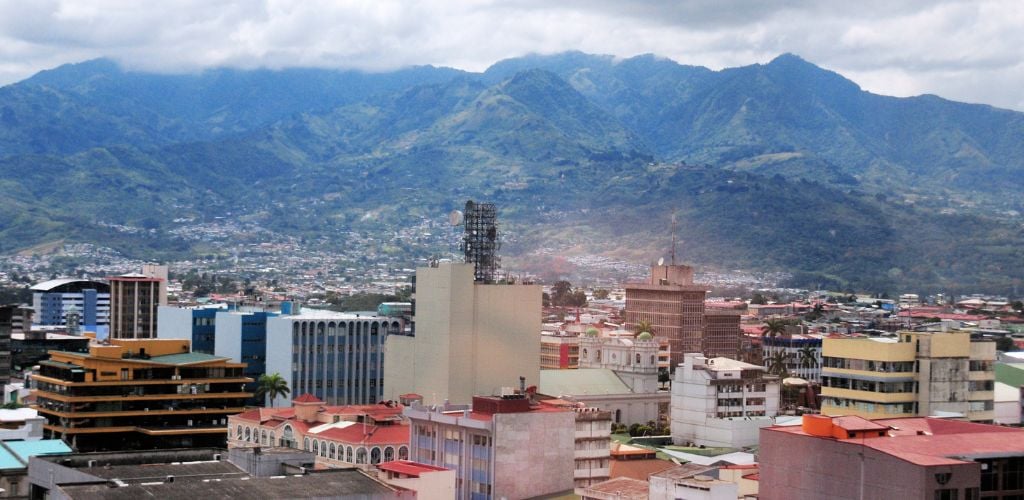
Although I didn’t house-sit in the capital city San José itself, I did spend a lot of time in and around it – including two Workaway language exchanges and a house-sit around 30 minutes outside of the city. As a result, I got to know the place very well.
I’d been warned about San José before traveling to Costa Rica, but most of these warnings were unjustified. Like any city, it has a few areas that should be avoided when alone or at night. For the most part, it’s a very cool and pleasant place to visit. Where to go and where to avoid are very obvious, and staying centrally in a populated area never gave me any cause for concern.
San José is home to a couple of great museums, wonderful streets filled with bars and restaurants, excellent shopping, and a few creature comforts if you’re missing a Starbucks or Taco Bell! By staying here, you’ll also be able to visit wonderful towns nearby like San Isidro, San Rafael, and San Ramon.
Location: San José is the capital and largest city in Costa Rica. It’s serviced by Juan Santamaria International Airport and is around 2 hours from the coast.
3. Jacó
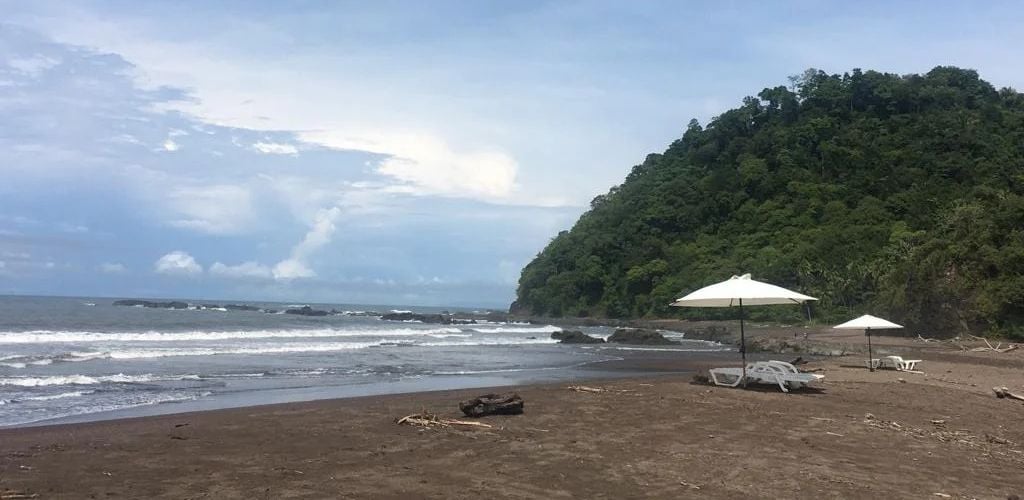
Jacó was the most Americanized area of Costa Rica that I stayed in. It’s the location of several large resort-style beachfront hotels and is popular with expats. It’s known as a bit of a party town, with lots of tourists frequenting the many bars and restaurants along the main strip through town. I had great fun house-sitting in Jacó.
The beach itself is stunning. The black sands stretch uninterrupted for 2.5 miles (4 km) and it’s a popular spot for sunbathers and surfers. The pleasant year-round weather makes it an ideal holiday destination for many people each year.
Although people may come to Jacó to relax and party there’s still plenty of natural beauty to enjoy. For example, the beautiful Manuel Antonio National Park is just an hour south of Jacó. There are numerous cool excursions available too. ATV and horseback riding tours, snorkeling cruises to Tortuga Island, hiking, and ziplining are all within easy reach.
Location: Jacó is located on the west coast of mainland Costa Rica. It’s around 62 miles (100 km) southwest of San José.
4. Puerto Viejo
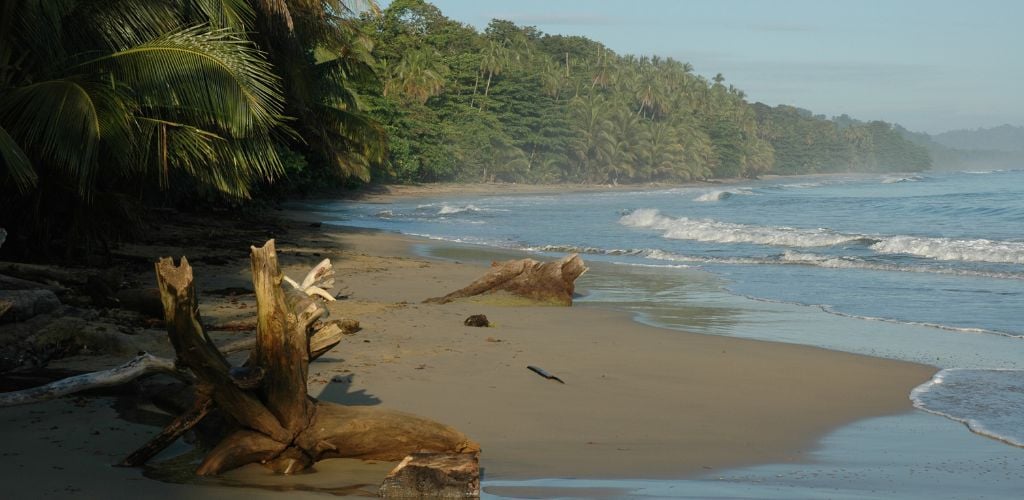
I almost got to house-sit in Puerto Viejo but my month-long sit was canceled at the last minute. It was a shame, but I settled for a wonderful few days by the beach with some friends visiting from England. Nestled along the eastern Caribbean coastline of Costa Rica, Puerto Viejo is a tropical haven and offers a unique travel experience.
Known for its blend of indigenous and Afro-Caribbean cultures, Puerto Viejo is a different experience from the rest of the country. The town is such a cool place to visit and is a melting pot of traditions. From the lively beats of reggae to the diverse aromas of local cuisine. It’s a dream destination for house-sitting in Costa Rica long term.
The Gandoca-Manzanillo National Wildlife Refuge is a stunning place to visit nearby, and snorkeling in the crystal-clear waters is an unforgettable experience. The whole town has a laid-back atmosphere and its warm, friendly people make visitors feel right at home.
Location: Puerto Viejo is located on the southeastern coastline of Costa Rica. It’s around 137 miles (221 km) southeast of San José. Sixaola, the closest border crossing into Panama is only around 28 miles (45 km) from Puerto Viejo.
5. La Fortuna
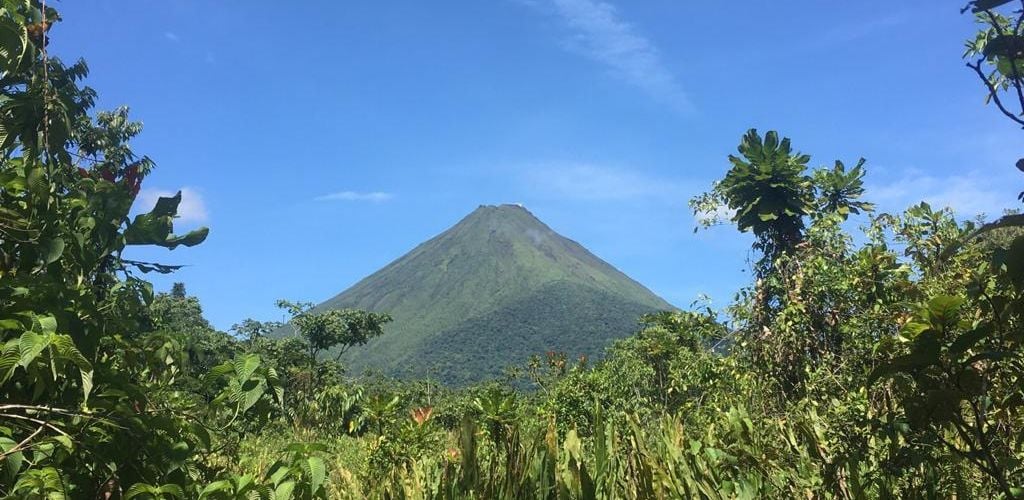
If you’re planning to visit Costa Rica to experience nature, as well as some enthralling experiences, I highly recommend you head to La Fortuna. Located centrally in the Alajuela region, this wonderful town had everything I hoped to gain from visiting Costa Rica; wildlife and stunning landscapes, zip lines, and natural thermal spas.
The iconic volcano that dominates the skyline is simply breathtaking, and La Fortuna Waterfall is a must for any Costa Rica itinerary. The Bogarin trail is a preservation area for sloths and numerous other wildlife such as toucans, lizards, and butterflies. It’s a great place to explore and to tick off seeing some native Costa Rican wildlife.
The town itself has a relaxed vibe with a steady flow of backpackers, and tourists, seeking nature and adventure mixed in with a bustling population of lifelong residents and locals. The small-town vibe makes it feel homely and welcoming, whilst ample attractions and amenities make it an exciting place to stay.
Location: La Fortuna is located around 80 miles (130 km) to the northwest of San José. The closest border with Nicaragua at Las Tabilillas is 100 miles (160 km) to the north.
Is Costa Rica Safe?
Costa Rica is considered one of the safest countries in Central America. The country’s commitment to eco-tourism and a stable political environment has contributed to its overall positive reputation. Visitors can enjoy exploring the national parks, pristine beaches, and vibrant cities without significant safety concerns.
However, like any travel destination, it’s essential to exercise caution and to always remain vigilant. Petty theft, particularly in crowded tourist areas in major cities like San José, can be a concern. Keep a close eye on your belongings at all times and only use reputable transport services like Uber and official buses if needed to get around.
In general, Costa Rica is a welcoming and secure environment for tourists and a great place to house-sit. Common-sense precautions, an awareness of local customs, and respect for the natural surroundings will certainly help when visiting from abroad.
Pros and Cons of Being a House Sitter in Costa Rica

As with anywhere, there are pros and cons to house-sitting in Costa Rica. So, based on my experiences, I’ve shortlisted a few for potential house-sitters to consider:
Pros of Living in Costa Rica
- Natural Beauty: Costa Rica has an abundance of breathtaking landscapes, pristine beaches, lush rainforests, and majestic mountains.
- Pura Vida Lifestyle: The “Pura Vida” lifestyle is a cultural mantra that translates to “pure life” and typifies the laid-back, positive, and stress-free approach to life in Costa Rica.
- Climate: Costa Rica enjoys a consistent tropical climate. With year-round temperatures averaging around 32°C (90°F) during the day and 23°C (73°F) at night.
- Healthcare: Costa Rica has a well-regarded healthcare system, with high-quality medical facilities and professionals. My husband needed a trip to the emergency room for ear trouble and was seen efficiently by a specialist and the treatment wasn’t expensive.
- Environmental Sustainability: Costa Rica is committed to environmental sustainability and conservation.
- Peaceful and Stable: Costa Rica is known for its stable political environment and lack of a military. It has been a peaceful nation for decades which fosters a safe and stable atmosphere.
- Friendly Locals: Costa Ricans, or “Ticos,” are known for their warmth and friendliness and I can certainly vouch for this.
- Outdoor Activities: The country is a paradise for outdoor enthusiasts, offering a plethora of activities such as surfing, hiking, zip-lining, and bird-watching.
- Cost of Living: While not the cheapest country in Central America, Costa Rica’s cost of living is reasonable, especially outside of major urban centers and certainly when compared to say, the USA or the UK.
Cons of Living in Costa Rica
- Language Barrier: While many Costa Ricans speak English, the official language is Spanish. Non-Spanish speakers may face challenges in certain situations, particularly in more rural areas.
- Insect and Pest Issues: The tropical climate brings with it a variety of insects and pests, which can be a nuisance and require ongoing pest control efforts.
- Natural Disasters: Costa Rica is prone to earthquakes and occasional hurricanes, which pose obvious risks and require residents to be prepared for an emergency.
- Rainfall: During the rainy season (May to November), the country experiences up to 9.5 inches (240 mm) of rainfall each month and as many as 27 rainy days each month. I found that it mostly falls heavily in the mid-late afternoons.
- Water Outages: In certain parts of the country, especially more rural areas the extensive rainfall can affect the pressure of the water supply and the pressure drops to almost nothing. This means taps, sinks, and toilets won’t work until they fix the problem which can often take hours to resolve.
- Power Outages – Likewise, power outages although rare do occur more frequently than in other countries I’ve visited. In 3 months I experienced three 4-8 hour complete power outages.
- Humidity – Given its tropical year-round climate, the humidity, especially during the rainy season can be overbearing at times.
- Non-Flushing of Toilet Paper: The sewage systems in many Costa Rican towns are very delicate and as a result, you will be asked to avoid flushing any toilet paper. A bin is provided which is a little unpleasant and can be a bit weird for some people, but it’s what they do.
- The Road Systems: Although there are main roads that connect the bigger towns, many of the local road systems are non-direct, cut through some seriously rural areas, and at times can be poorly maintained.
House Sitting in Costa Rica: FAQs:
Here are some answers to commonly asked questions about house-sitting in Costa Rica:
Most house-sitting websites will have insurance options within their various membership bands that cover host cancelation and some other basic pet or house-sitting eventualities. But as a rule, it would be a great idea to have a general travel insurance policy in place for visiting Costa Rica.
To become a house-sitter in Costa Rica you first need to sign up on a house and pet-sitting website. There are many great ones, such as Trusted Housesitters, Mind My House, and Nomador which have listings for Costa Rica and are full of helpful information to get you set up as a sitter.
Although there may be opportunities to get paid to be a house-sitter in Costa Rica, money doesn’t factor into any of the websites I’ve ever used. Predominantly the exchange of a wonderful home, loving pets, and the enhanced experience of living somewhere new is the payment.
Yes. Although quite rare, I have certainly seen listings for house-sitting in Costa Rica without pets. Sites like Trusted Housesitters will allow you to search for listings without pets. However, I’ve found that for the most part, pets are included as part of the bargain in the majority of listings.
The specific regulations for house-sitters in Costa Rica can vary, and it’s essential to check for recent information relative to your nationality and where you are traveling from. Generally, tourists are allowed to stay in Costa Rica for up to 90 days without a visa. This period includes both tourism and non-work-related activities, such as house-sitting.
Always ensure that your stay complies with the legal requirements of the country.
House-sitting jobs in Costa Rica are awesome. From the gorgeous beaches of both coastlines to the bustling cities and towns there’s so much to love. Friendly people, pleasant year-round weather, great food, and so much natural beauty. House-sitting in Costa Rica allows you to live like a local and truly experience the wonderful country to the fullest.
Yes, there are luxury house sits in Costa Rica. Luxury can be subjective but I personally found many of the places I stayed, both as house-sits and in Airbnbs, hotels, etc. were to a really high standard and in keeping with some of the best places I have stayed around the world.
Costa Rica stands out among Central American nations for safety and boasts a stable political environment. However, caution and common sense are advised, especially in crowded tourist areas where petty theft can occur. To best predict safety when traveling, always utilize trusted transportation like Uber and official buses.
Overall, Costa Rica provides a secure environment for tourists and house-sitters alike.
In Conclusion
My time in Costa Rica flew by and writing this article has made me very keen to return as soon as possible. It’s such a wonderful place and house-sitting there made it even more special. Getting to really know a place and the people is such a different experience from simply passing through.
With so much diversity, I was able to enjoy many different aspects of Costa Rican culture and heritage within a single trip. So, whether you crave world-renowned beaches, the buzz of big cities, the tranquility of the rainforest, or a mixture of all of these attractions, Costa Rica will have a house-sitting opportunity to suit you.
What are you waiting for?! Get yourself signed up today and begin your search for your perfect Costa Rican house-sit placement.
The post How to Become a House Sitter in Costa Rica appeared first on Goats On The Road.


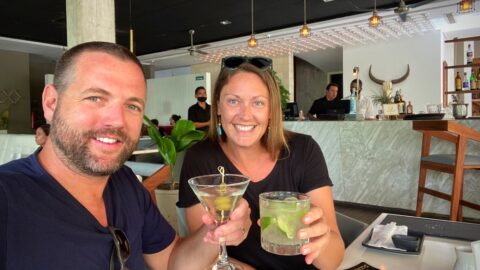

Recent Comments